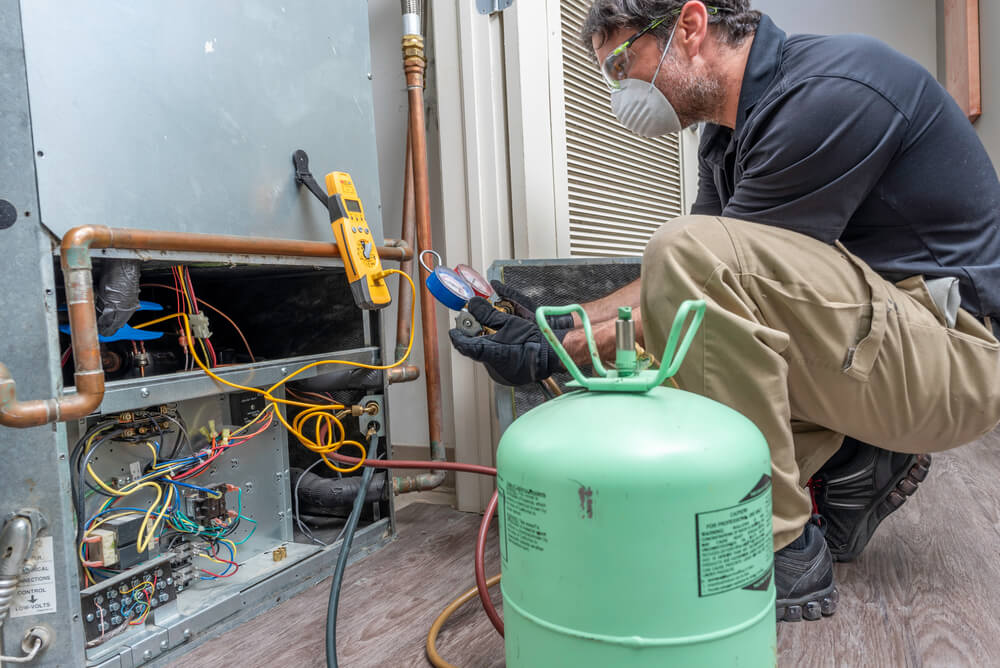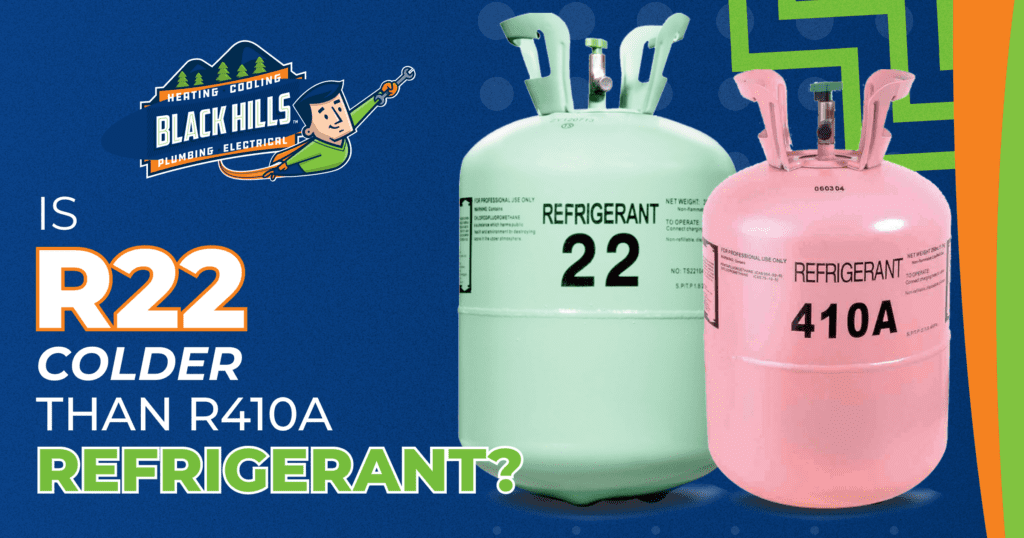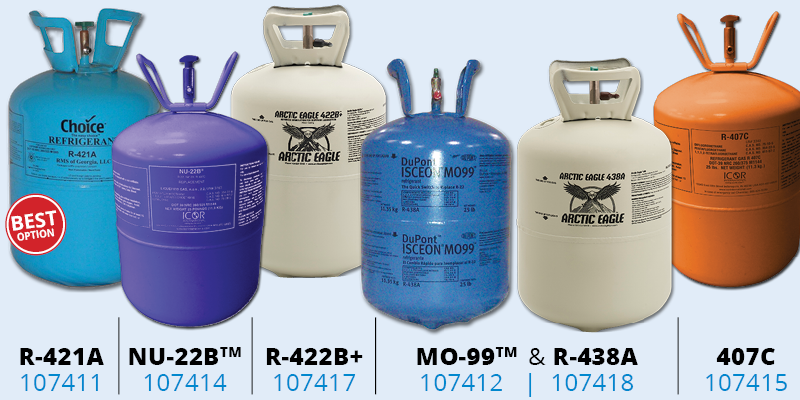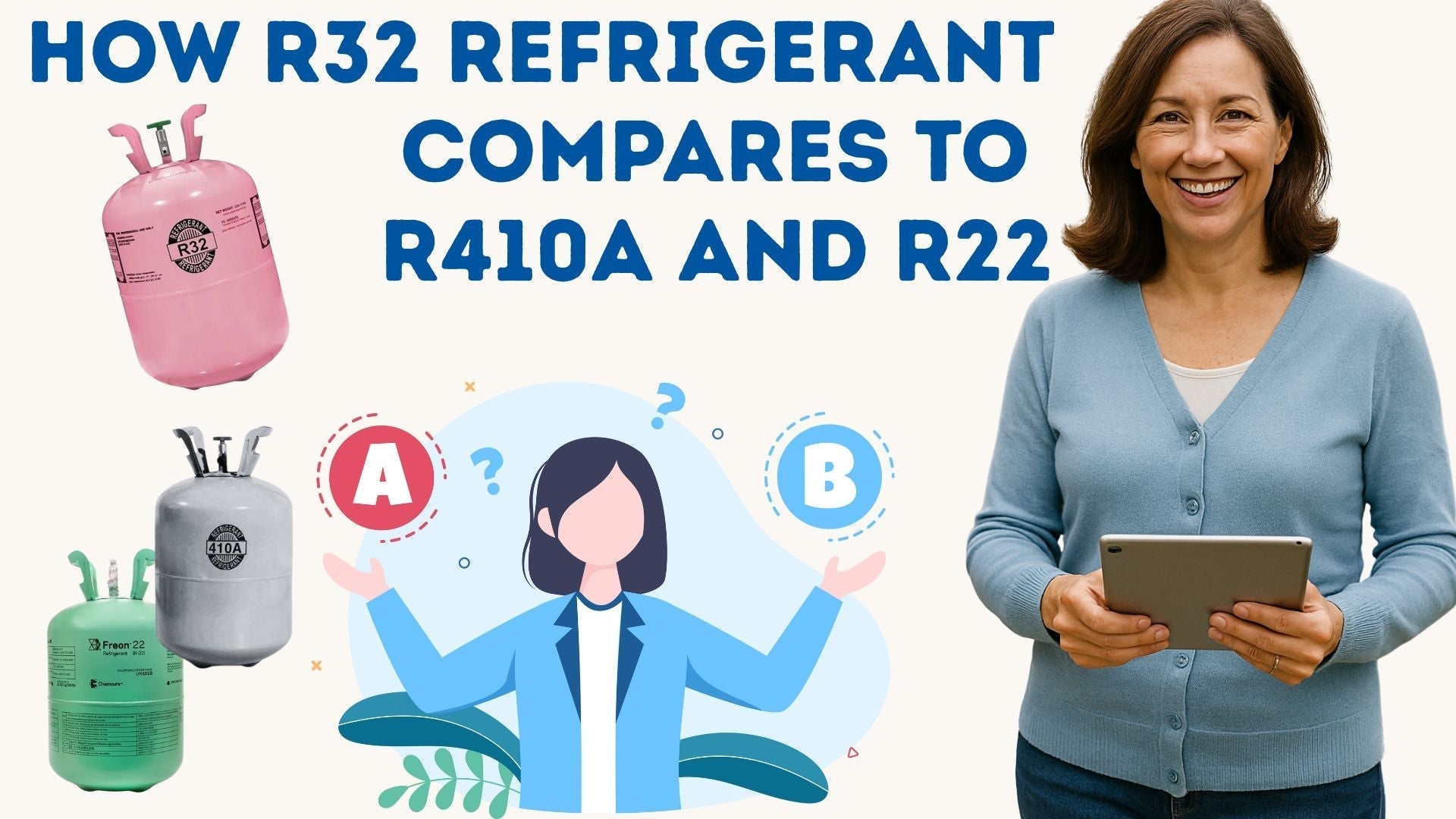Can You Replace R22 With R410a

Frequently Asked Questions: Replacing R22 with R410a
If you have an older air conditioning system, you might be wondering about refrigerant options, especially with the phasing out of R22. Here are some common questions about replacing R22 with R410a, the current standard refrigerant.
Q: Can I simply replace the R22 in my existing AC system with R410a?
No, you cannot directly replace R22 with R410a in your existing air conditioning system. It's not a simple swap-out. These two refrigerants operate at significantly different pressures and require different types of oil and components. Trying to use R410a in a system designed for R22 will likely result in serious damage to your unit, potentially leading to a complete system failure.
Q: Why can't I just swap R22 for R410a? What are the major differences?
There are several critical differences that prevent a simple refrigerant swap:
- Pressure: R410a operates at much higher pressures than R22. This means the components of an R22 system, such as the compressor, condenser coil, evaporator coil, and refrigerant lines, aren't designed to withstand the higher pressure of R410a. Using R410a would put undue stress on these components, causing them to leak or even burst.
- Oil Compatibility: R22 systems use mineral oil, while R410a systems use synthetic oil, typically POE (polyolester) oil. These oils are not compatible. Mixing them can lead to sludge formation, reducing the system's efficiency and lifespan. POE oil also absorbs moisture more readily than mineral oil, requiring different handling procedures.
- Component Design: R410a systems require different compressor designs, expansion valves, and other components that are specifically engineered to handle the higher pressures and characteristics of the refrigerant. The size and construction of the coils are also different.
- Safety: Attempting to retrofit an R22 system with R410a is not only technically unsound but also potentially dangerous. The higher pressures can lead to explosions or refrigerant leaks, posing a risk to anyone nearby.
Q: My AC technician suggested a "drop-in" replacement refrigerant. Is this the same as using R410a? Is it a good idea?
Some refrigerants are marketed as "drop-in" replacements for R22. These are *not* R410a. These alternative refrigerants are designed to be more compatible with existing R22 systems, but they are not a perfect substitute and come with their own considerations.
Here's what you need to know about "drop-in" replacements:
- They are *not* R410a: These refrigerants have different chemical compositions and properties than both R22 and R410a.
- Performance may be reduced: While they may work in an R22 system, the cooling capacity and energy efficiency may be lower than with the original R22 refrigerant. You might notice that your AC doesn't cool as well or that your energy bills increase.
- Compatibility issues can still arise: Even though they are designed to be more compatible, there can still be issues with oil compatibility, seal compatibility, and potential long-term effects on the system's components.
- Not all technicians are familiar: Some technicians may not be experienced in working with these alternative refrigerants, which could lead to improper installation or servicing.
- Long-term availability uncertain: The long-term availability and cost of these "drop-in" refrigerants can be uncertain compared to R410a, which is the established standard.
Recommendation: Before considering a "drop-in" refrigerant, carefully weigh the pros and cons. Discuss the specific refrigerant being proposed with your technician, research its properties and potential issues, and get a written guarantee about its performance and compatibility with your system. Consider the long-term costs of maintaining an older system versus replacing it with a newer, more efficient R410a system.
Q: What are my options if my R22 AC system needs refrigerant?
You have a few options, each with its own considerations:
- Repair the leak and recharge with R22 (if available): If the leak is small and easily repaired, you might be able to recharge the system with R22. However, R22 is becoming increasingly scarce and expensive due to the phase-out. Finding a reliable source of R22 can be challenging, and the cost can be prohibitive. Furthermore, even after repairing the leak and recharging the system, there is no guarantee that other leaks may develop in the future, requiring more R22.
- Use a "drop-in" replacement refrigerant (with caution): As mentioned earlier, some refrigerants are marketed as "drop-in" replacements for R22. This might be a temporary solution, but it comes with potential performance and compatibility issues. Thorough research and careful consideration are essential.
- Replace the entire AC system: This is often the most cost-effective long-term solution. Replacing your old R22 system with a new R410a (or newer refrigerant) system offers several benefits:
- Improved energy efficiency: Newer AC systems are significantly more energy-efficient than older models, which can lead to substantial savings on your energy bills.
- Lower repair costs: A new system will have fewer maintenance issues than an aging R22 system.
- Environmentally friendly: Modern refrigerants have a lower environmental impact than R22.
- Improved performance: New systems offer better cooling performance and more consistent temperatures.
- Warranty: New AC systems typically come with a manufacturer's warranty, providing peace of mind.
Recommendation: Evaluate the overall condition of your R22 system. If it's old, inefficient, or requires frequent repairs, replacing it is likely the best long-term investment. Get quotes from multiple HVAC contractors to compare the cost of different options.
Q: What is the average cost of replacing an R22 system with a new R410a system?
The cost of replacing an R22 system with a new R410a system varies depending on several factors:
- Size of the unit: Larger units require more materials and labor, increasing the cost.
- Efficiency rating: Higher-efficiency models typically cost more upfront but offer greater long-term energy savings.
- Brand and features: Some brands are more expensive than others, and features like smart thermostats or variable-speed compressors can add to the cost.
- Installation complexity: The complexity of the installation, such as the need for new ductwork or electrical modifications, can affect the price.
- Location: Labor costs and material prices vary by region.
Generally, you can expect to pay anywhere from $3,000 to $10,000 or more for a complete AC system replacement. It's best to get quotes from multiple licensed and insured HVAC contractors to get an accurate estimate for your specific situation. Be sure to ask for a breakdown of the costs, including the equipment, labor, and any additional expenses.
Financing options are often available. Check with the contractors about potential rebates, tax credits, or other financial incentives that may be available from your local utility company or government programs.
Q: Will I have to replace my entire HVAC system, or just the outdoor unit?
Ideally, you should replace both the indoor (evaporator coil) and outdoor (condenser) units at the same time. Here's why:
- Matching Components: AC systems are designed to work as a matched set. Replacing only one component can lead to performance issues and reduced efficiency.
- Refrigerant Compatibility: The indoor coil in an R22 system is not designed for R410a. Mixing an R22 indoor coil with an R410a outdoor unit can cause problems with pressure and oil compatibility.
- Warranty Issues: Manufacturers typically require that both the indoor and outdoor units be replaced simultaneously to maintain the warranty on the new equipment.
- System Lifespan: Replacing only one component leaves you with an older, potentially less efficient component that may fail sooner than the new unit.
While it might be tempting to save money by replacing only the outdoor unit, it's generally not recommended. Replacing both the indoor and outdoor units ensures optimal performance, efficiency, and longevity of your new AC system.
Q: What should I look for when choosing a new R410a AC system?
When choosing a new AC system, consider the following factors:
- SEER Rating: The Seasonal Energy Efficiency Ratio (SEER) measures the cooling efficiency of an AC system. Higher SEER ratings indicate greater energy efficiency and lower operating costs. Look for a SEER rating of at least 14, and ideally 16 or higher, to maximize energy savings. Many areas offer incentives for installing high-efficiency units.
- Size: It's crucial to choose the right size AC system for your home or building. An undersized unit won't cool effectively, while an oversized unit will cycle on and off frequently, leading to wasted energy and reduced comfort. A qualified HVAC contractor can perform a load calculation to determine the appropriate size for your needs.
- Brand Reputation: Research different AC brands and read reviews to get an idea of their reliability and performance. Choose a reputable brand with a solid track record.
- Warranty: Look for a system with a comprehensive warranty that covers both parts and labor. A longer warranty provides greater protection against unexpected repairs.
- Features: Consider features like smart thermostats, variable-speed compressors, and zoning systems to enhance comfort and energy efficiency.
- Contractor Experience: Choose a licensed and insured HVAC contractor with extensive experience in installing and servicing AC systems. Check their references and read online reviews to ensure they have a good reputation.
By carefully considering these factors, you can choose a new R410a AC system that meets your needs, provides reliable performance, and saves you money on energy bills.










